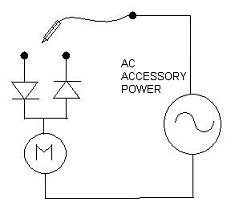I'm still in my design stage for my n scale layout
 . I will be using the twin-coil switch machines mounted under the track bed, for the mainline and sidings. And manual hand thrown switches for the yard.
. I will be using the twin-coil switch machines mounted under the track bed, for the mainline and sidings. And manual hand thrown switches for the yard.
My question is on my control panel . What should or can i use? Should i use push buttons or SPTD switches to operate my switches from my control panel? Or is that a personel preference also.
Thank you all for your help again
 ,
,
Cliff

My question is on my control panel . What should or can i use? Should i use push buttons or SPTD switches to operate my switches from my control panel? Or is that a personel preference also.
Thank you all for your help again

Cliff


